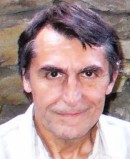
Plenary Lecture
Night Vision Systems for Pedestrian Safety from Road Traffic

Professor Aleksander Bekiarski
Department of Telecommunications
Technical University Kliment Ohridski
Sofia, Bulgaria
E-mail: aabbv@tu-sofia.bg
Abstract: The significant increase in road traffic has lead to increased traffic accidents involving pedestrians. These accidents depend both from car drivers and pedestrians attentions in a road situation and are more dangerous and fatal in the night. Therefore the developments of the automatic warnings systems is of an important goal of the automotive industry. The development of technology for night vision and thermo vision created favorable conditions for their application as far-infrared (FIR) and near-infrared (NIR) night vision systems. In addition to protecting pedestrians night vision systems in vehicles are used in police and military security systems and traffic control. This paper describe first the main principles of night vision systems and then focus is directed to the development of the methods for processing night vision images which are generated by passively detecting thermal emissions from objects and surfaces in the road scene or actively illuminate the scene in the near infrared spectrum and capture the reflected radiation. The presented methods are for preprocessing, noise suppression, objects (pedestrians in the road) detection and tracking in night vision static or moving images. The results from these methods in form of information for existence of objects (pedestrians in the road) and also the space information of objects (pedestrians place in the road) are sending to the car computer system, which can pay attention of the car driver generating audio or visual alarm signals or take the automatic operations to prevent the accident of car with the pedestrian. For all of the method described hire are presented the suitable algorithms developed to present the main steps necessary for realization of these methods. Some results from simulations and real working night vision systems for pedestrians safety, conclusion and propositions for future works are added to the end of this paper.
Brief Biography of the Speaker: Born in 1944, Plovdiv, Bulgaria. He received M.S. degree in Communications in 1969 in Technical University, Sofia. Ph. D in Television and Image Processing in 1975, Assoc. Prof. since 1987 in the same University. Proffesor since 2010 in Technical University-Sofia University.Vice-Dean of Faculty on Life-Long Learning Center since 2005, Vice-Dean of French Language Faculty of Electrical Engineering since 2006. The author over 212 research papers in Image Processing Systems, Pattern Recognitions, Neural Networks etc. Currently the leader of courses in Basic of Television, Television Systems, Theory of Coding, Digital Signal Processors etc. His scientific iterests encompass Video and Audio Processing, Digital TV, Neural Networks, Artificial Intelligence in Video and Audio, Artificial Intelligence Programming Languages Lisp Prolog, Expert Systems, Robotics Camera Eye and Microphone Arrays, Signal Processors, Embedded Systems, Microcontrollers, Programming Languages C++, Java, Matlab etc.